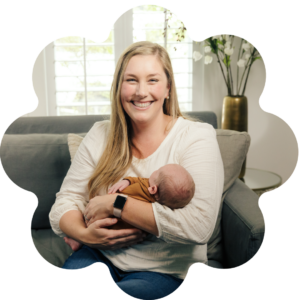
Does this sound familiar? You put your baby down for their nap or nighttime sleep, and they stay awake in their crib playing or fussing. Daytime naps are barely long enough for you to get anything done, and sleeping through the night has become a thing of the past. All these are signs that it’s time to extend your baby’s wake windows.
What Are Wake Windows?
Wake windows are the periods of time from when your baby wakes up to when they go back to sleep. This is when they’re alert and can interact with their environment. These windows vary in length and frequency depending on the age and needs of your baby. Typically they last anywhere from 30 minutes to a couple of hours and occur around two to four times a day.
This is the time when you’ll feed your baby, put them down for tummy time, take them for walks, and generally just interact with them.
Why Are Wake Windows Important?
Yes, wake windows are a real thing and they can be the key you need to unlock a better sleep schedule for your baby.
When you respect your little one’s wake windows and put them down for naps before their late sleep cues start (such as cranky or fussy behavior), they’re able to fall asleep way more easily.
If naptime is always a struggle and your baby only gets 30 minutes of shuteye at a time, I have a free guide for you.
Remember, the lights, sounds, and experiences of the outside world can be super overstimulating for a little one. That’s one of the reasons why they need to sleep often.
As they grow and they’re able to tolerate more stimulation, their wake windows can increase and you can even drop a nap.

Signs That Your Baby’s Wake Windows Are Too Short
Your baby will tell you when they need more active time – you just have to notice the cues this developmental leap brings!
Notice what happens during nap time. Are naps getting shorter? Is it starting to take longer for your baby to settle down for their naps? These are signs that your baby is craving more awake time.
Other signs include your baby waking up earlier in the morning and more often at night.
You should also consider your baby’s age when navigating wake windows and naps.
Age-Appropriate Wake Windows
The younger your baby, the smaller their wake windows will be. Newborn wake windows (up to eight weeks of age) can be 45 minutes to an hour long. From there, you can increase their wake window by 25 to 30 minutes every month. So, wake windows for a six-month-old will be two to two and a half hours while wake windows for seven months will be two and a half to three hours.
How To Extend Your Baby’s Wake Window
Don’t attempt to just extend their wake windows all in one go. It’s best to adjust a baby’s sleep schedule gradually. What To Expect explains, “Move her bedtime later by about 10 minutes each night until she’s hitting the hay about an hour later.” Extending their wake window before bed can help them sleep through the night and not wake up at the crack of dawn.
The trick when it comes to wake windows is to make your baby tired so that they’re ready to go to sleep. But, they should not be too tired that they struggle to fall asleep.
What To Do With Your Baby During A Wake Window
The activities to include in wake windows depend on your baby’s developmental age.
Here are some ideas for young babies under a year:
- Feed them – wake windows always include feeding.
- Put them down for tummy time with interactive items and contrasting toys to play with.
- Take your baby outside to expose them to new sights and sounds.
- Take them with you around the house as you go about your day. Play peek-a-boo with them as you’re folding laundry, for example.
Wake time is all about interaction and observation – it really doesn’t have to be fancy.

Not All Wake Windows Are The Same
Your baby’s wake windows will not be consistent.
Their first wake window may be 60 minutes, and their next an hour and a half. They may feed once during their first wake window and twice during their next. They may catnap and then only wake for a short bit before bedtime. You may need to shorten their wake window because their last nap was short.
Remember that not every day is the same, and sometimes your baby can be more tired due to illness or teething.
Can Wake Windows Get Shorter?
Yes! It’s possible to extend a baby’s wake window too much, and you must go back a few steps.
Signs that your baby needs shorter wake windows include:
- They’re fighting their nap – this can be due to irritability, a clear overtired cue.
- Their attention span and activity level drops.
- Cranky behavior.
When this happens you can put your baby down for a nap 10 minutes earlier when they’re drowsy but not asleep. This gives them a chance to drift off by themselves.
Baby wake windows are tricky! It can feel like you’re tinkering with a recipe to get that sweet spot. Plus, babies’ sleeping patterns are constantly changing within the first year. Mama, there will be times that you miss the “ideal” window – that’s okay. It’s not about getting things perfect. Just remember to stay consistent, watch for cues, and give your little one time to settle into a new routine.




